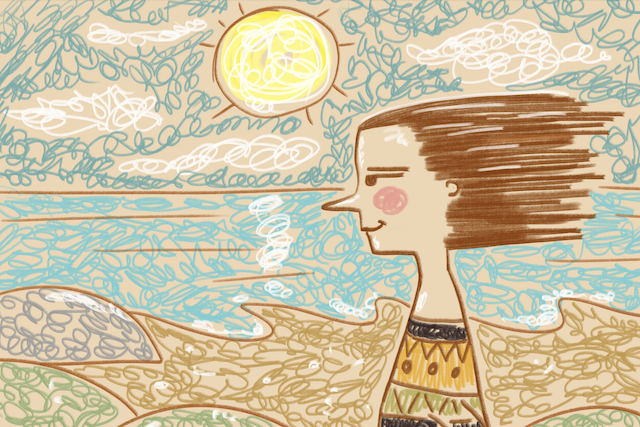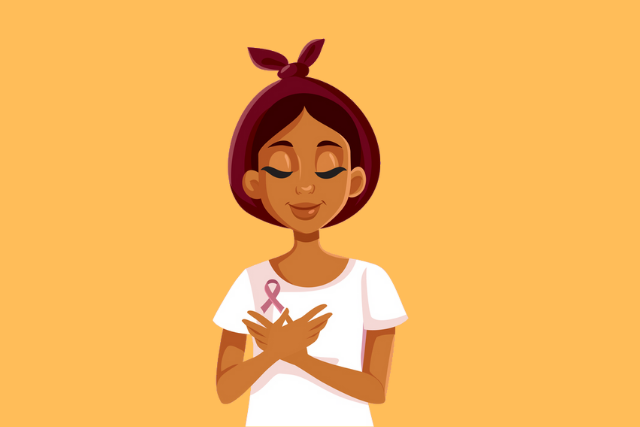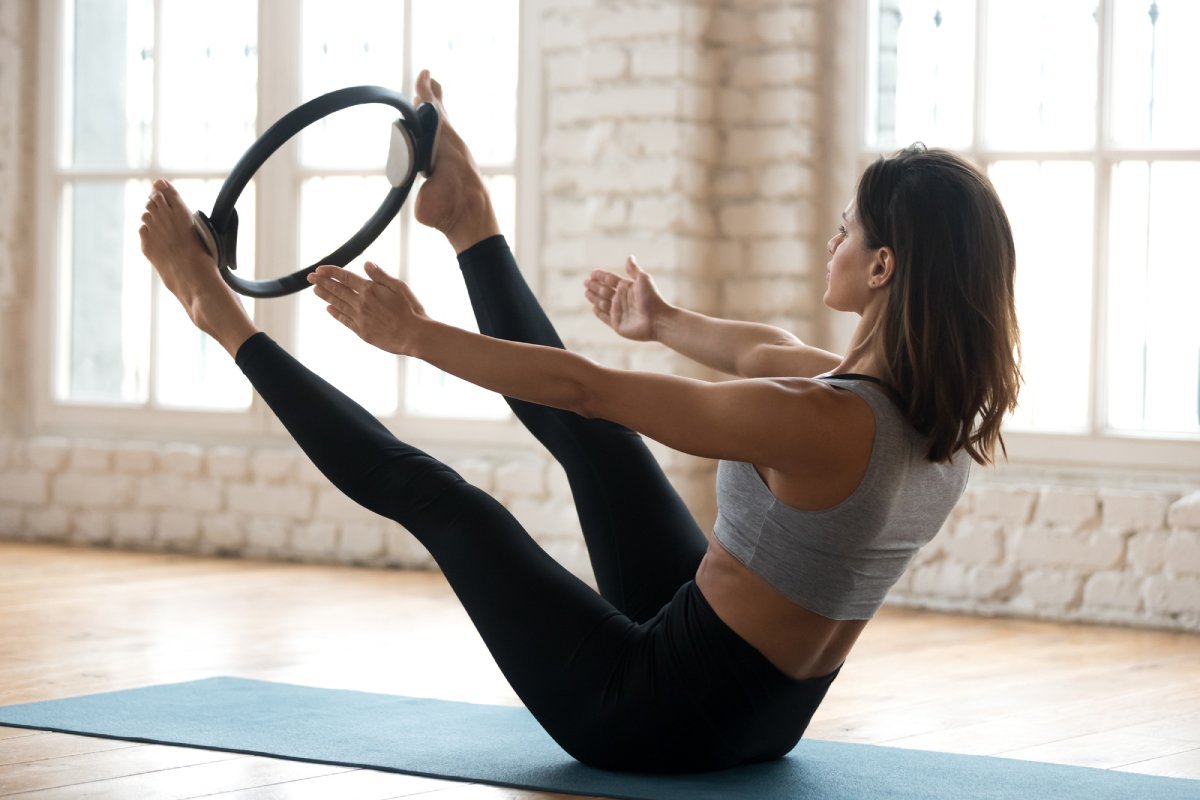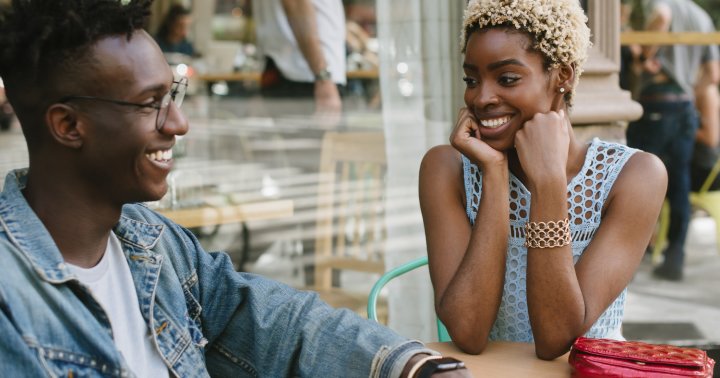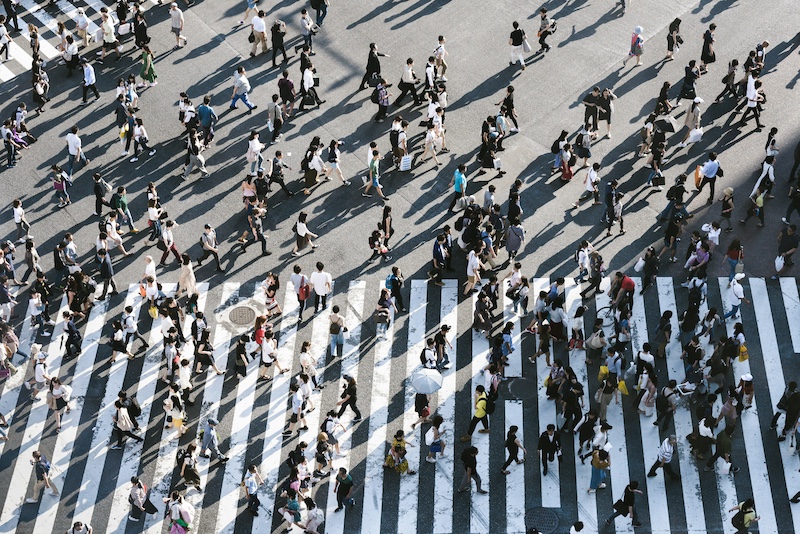Celebrating Mindfulness Day: A Q&A With Leading Meditation Teachers
Mindfulness teachers Vidyamala Burch, Brother Ngộ "Freedom" Không, Shauna Shapiro, and Shamash Alidina answer questions about how mindfulness can support well-being. The post Celebrating Mindfulness Day: A Q&A With Leading Meditation Teachers appeared first on Mindful.
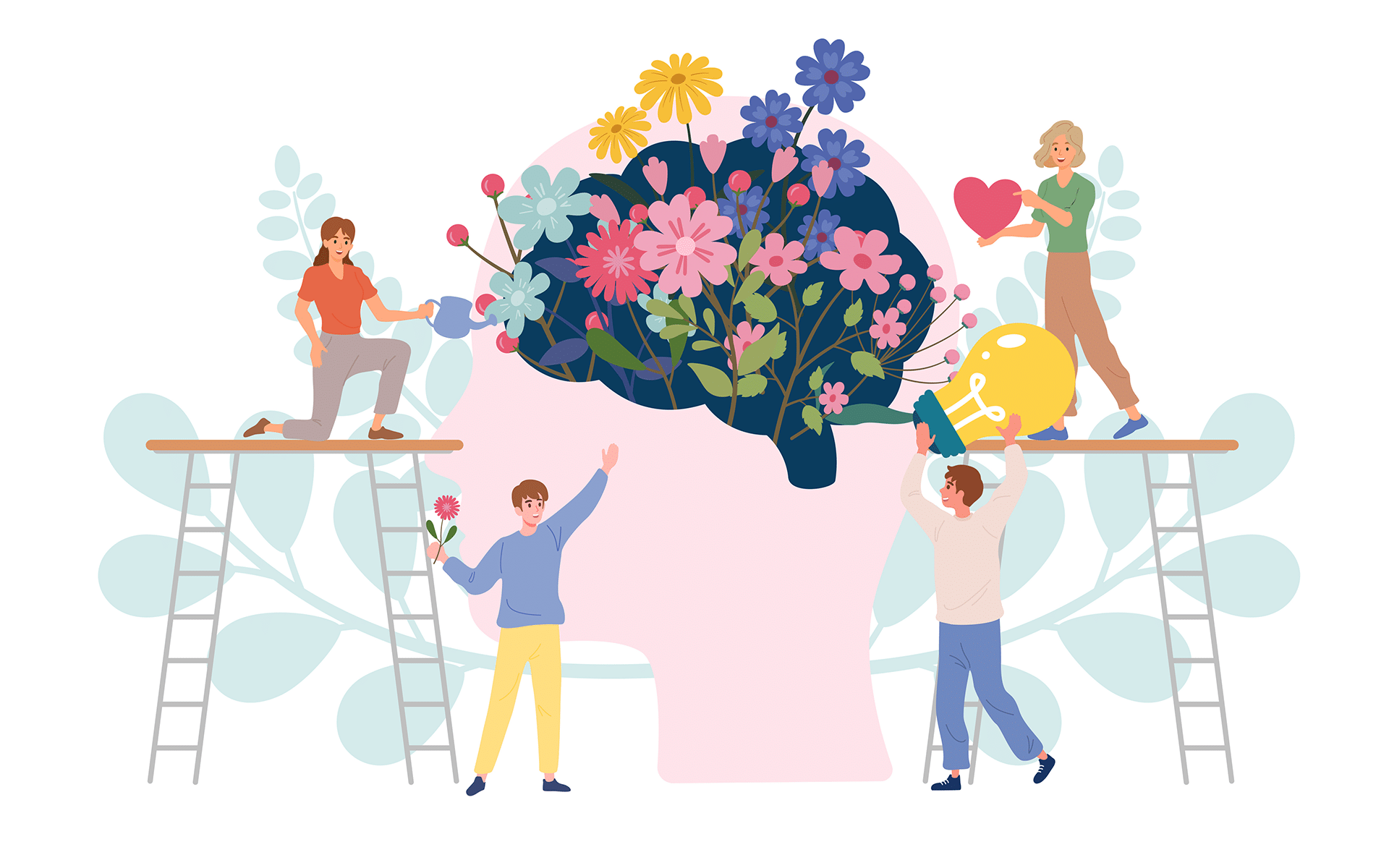
Happy Mindfulness Day!
Over the last decade, the 12th of September has emerged as a day to highlight and explore all things mindfulness. So, I’ve teamed up with Mindful.org and Mindfulness.com to celebrate all things mindfulness.
This year we’ve picked the theme of Mindfulness for Well-being. What does “well-being” really mean in the context of mindfulness? How can this ancient practice adapt and evolve to address the multifaceted challenges we face in today’s society? This Mindfulness Day, we take a moment to pause, reflect, and dive deep into the profound world of mindfulness and its transformative impact on our well-being.
We’re not alone on this journey; we’ve enlisted the wisdom and expertise of three figures in the field of mindfulness. Each brings their own unique background, perspectives, and practical advice to this invaluable conversation. As a mindfulness teacher, I share my thoughts on the themes too.
Meet the Teachers
Vidyamala Burch is a mindfulness and compassion teacher, speaker, coach and award-winning author. Her evidence-based Mindfulness-based Pain & Illness Management (MBPM) approach has reached over 100,000 people around the world and is recognised by health boards globally. Through her work, she hopes to empower those living with pain or difficulty to reclaim their lives.
Brother Ngộ “Freedom” Không, often simply called Brother Freedom, is a Buddhist Zen monk, who practices and teaches mindfulness and meditation at Deer Park Monastery, California, for communities, universities, and the corporate world. He is thrilled about the possibilities mindfulness bears for the well-being and development of individuals, communities, and societies.
Dr. Shauna Shapiro PhD, is a best-selling author, professor, clinical psychologist and internationally recognized expert in mindfulness and self-compassion. She has spent two decades studying the benefits of mindfulness and compassion, publishing over 150 papers and three critically acclaimed books. Her TEDx Talk, “What You Practice Grows Stronger,” has been viewed over 3 million times.
And I, Shamash Alidina, am author of The Mindful Way through Stress and Mindfulness for Dummies that has sold over 100,000 copies. I bring to this conversation years of experience as a mindfulness teacher trainer and Acceptance and Commitment Trainer. My focus is on how mindfulness can help us not only live well but also thrive, especially through intentional community engagements like my Daily Mindfulness Club and Teach Mindfulness Academy. I love both a scientific approach and the spiritual teachings of non-duality.
In the subsequent sections, each of us will answer key questions about mindfulness practices, quick techniques for managing stress and anxiety, and the significant societal challenges. Whether you’re a seasoned practitioner or a curious newcomer, this collaborative feature aims to offer enlightening perspectives and practical tools that cater to a wide range of mindfulness interests.
So, let us embark on this journey of exploration and understanding, with the hope that the shared wisdom will serve as both a guide and an inspiration, enhancing your Mindfulness Day and the days that follow.
What Does Mindfulness Mean to You?
Vidyamala Burch
Mindfulness is breathtakingly simple and yet most of us find it hard to experience in the hurly burly of life. It is so close we can’t see it—like trying to look at your own eyeball. We tend to complicate things as humans and look for elaborate conceptual formulations, but I see mindfulness as simply ‘presence’.
It involves being fully present to experience in each moment and knowing what is happening mentally, emotionally, and physically. This opens the door to choice: rather than being propelled through life by automatic reactions, we can choose a wiser and kinder response. We can gradually change our default setting from resistance and craving in relation to experience, to resting in a quality that is much more open, fluid, connected to oneself, others, and the world; and loving.
Brother Ngộ “Freedom” Không
Mindfulness to me means to be alive, to be right here where I am right now, to be in the immediacy of this moment with whatever it contains, be it pleasant or painful, I know I am alive.
Dr. Shauna Shapiro
Mindfulness at its most basic level is about awareness. This awareness is always already here. It is an innate human capacity, and yet, it is also a skill that can be cultivated through practice. My colleagues and I developed a model of mindfulness to elucidate its three key elements:
Intention sets our compass, helping us zero in on the most important thing. Attention helps us train and stabilize our focus in the present moment. Attitude guides how we pay attention—with kindness and curiosity.Mindfulness, then, is the awareness that arises through intentionally paying attention with kindness and curiosity.
For me, personally, mindfulness rescued me during my darkest hour as a teenager after spinal fusion surgery. The impact it had on my life at that time, physically and emotionally was so profound that it propelled me into a lifelong dedication to both the science and practice of mindfulness and has been a guiding light personally and professionally for the past 30 years.
Shamash Alidina
To me, mindfulness is a harmonious blend of awareness, curiosity, compassion and action. It’s not just about being present but understanding how that presence can be a catalyst for meaningful change.
Mindfulness transcends mere technique. It can be a way of living that leads to greater wisdom and insights. At its deepest level, it’s about exploring our sense of self and coming to a deeper understanding of our interconnectedness with all things.
What Are Your Daily Mindfulness Practices?
Vidyamala Burch
I do meditation practice for up to an hour a day to train my awareness to be more present to the immediacy of experience: feeling my body, knowing my mood, familiarizing myself with the stream of thoughts flowing through my mind. I practice learning to release entanglement with experience through automatic craving or aversion, and instead releasing into a more fluid, loving, and open way of being.
I also practice mindfulness in daily life, which in many ways is the more important practice. It is really important to carry mindfulness training into all activities as this is where the rubber hits the road. How can you maintain presence, love, and openness when there are so many things grabbing at your attention in daily life? I’ve found maintaining a good sense of humor to be essential as, more often than not, my awareness practice will involve noticing how unaware I have been in the previous moments. Then I remember that every moment is a new moment, and I can simply drop back into the here and now, re-group without judging myself harshly, and continue with my day with more awareness and kindness.
“I’ve found maintaining a good sense of humor to be essential as, more often than not, my awareness practice will involve noticing how unaware I have been in the previous moments.”
Vidyamala BurchI also do a tea ceremony most days. This involves my husband and I sitting outside in nature and ritually drinking tea. It can be exquisitely pleasurable to open to all the senses: the taste of the tea, the sounds of the birds, the sense of the energy of life thrumming within and around me, the sky above. It takes me out of “doing” mode and helps me drop into simple, beautiful presence.
Brother Ngộ “Freedom” Không
I practice sitting meditation twice a day for about 30 minutes each session. I take time for walking meditation once a day for 30 minutes. I also practice deep relaxation once a day for 25 to 30 minutes, and I eat two meals a day in silent contemplation.
Dr. Shauna Shapiro
I’ve had a daily meditation practice for 30 years. For the first 20 years, my formal practice was focused on quantity of practice per day. In these last years, I still sit daily, both in the morning and evening, but I have begun to focus more on the integration of mindfulness into my daily life. One of the greatest allies in bringing mindfulness into my daily life is to focus on my intention. By reflecting on my intention throughout the day it helps wake me up from autopilot, reminding me of why I am doing what I’m doing. Intentions help me zero in on what’s important and allow me to reset my compass. What’s more, intentions are not just psychological ideas, they are neurochemicals. When I set an intention it releases the neuromodulator dopamine, which triggers a cascade of neurochemistry to help me stay motivated and focused on what matters most.
Shamash Alidina
My daily mindfulness practice kicks off with a 30-minute guided meditation session that I lead for my mindfulness club at 7:30 am. This morning ritual serves as a grounding force for my community members and myself. At the end of that meditation, I don’t ring a bell. Instead, I remind us all that we can open our eyes and continue the meditation into the day.
Throughout the day, I incorporate mindful moments, where I pause to take a mindful breath, centering my awareness on the here and now. I enjoy being curious about my surroundings, and also curious about how I react or respond to others, especially when challenges come up. Mindfulness is not just about being curious of my external landscape, but also my internal thoughts that pop up and feelings that arise. I don’t seek to change the thoughts or feelings—I like to just watch them at play in the sky of awareness, like the clouds that comes and go in the sky above me.
These practices are a part of my love of the mindful teachings I share, creating a joyous integration between my professional and personal life, which I’m so grateful for.
What Are Your Go-To Techniques for Quick Stress and Anxiety Relief?
Vidyamala Burch
The main thing I would recommend is checking in on breathing. When we’re stressed or anxious we almost always automatically hold the breath in big or small ways. To release this holding, I recommend focusing on the out-breath by letting it flow all the way out. Then allow the next in-breath to flow back in its own time. Gradually, your breathing will slow and this will help to bring about more calm. It’s also important to do this with an attitude of warmth and kindness towards yourself.
A quick way to remember this is: Stop, Drop, Breathe, Love.
Stop whatever you are doing and pause Drop into the body Breathe—especially allowing the out-breath its full expression Love and be kindBrother Ngộ “Freedom” Không
Long story short, that would be the Power Meditation which empowers us to get in touch with inner peace and presence in only a few minutes.It can be exercised anywhere—in meditation, in the kitchen, in a park, or while on a train.
The first stage is designed to bring body and mind back to oneness and at the same time to help bring us back to the present moment, to connect us with the miracle of life now occurring. If we can breathe with this intention for two or three minutes, our breathing will quite naturally become light, leisurely, gentler, slower, and deeper, and naturally we may begin to feel more at ease in body and mind. This is the second stage, “deep, slow.” We can stay with this stage for as long as we like. Next we come to “calm, ease.” Here we can achieve deeper tranquility , a sense of calm of body and mind, and the meditation will continue to nourish us. The fourth stage, “smile,” brings relaxation to all the facial muscles and acknowledges the benefits of meditation. “Release” helps to remove all the tensions and worries which still remain in the body. “Present moment, wonderful moment,” brings us back to the here and now.Dr. Shauna Shapiro
What has helped me the most in moments of stress or anxiety is the three-part self-compassion practice I’ve adapted from my dear friend Kristin Neff.
Mindfulness. First, name the emotion you’re feeling. We have to know we’re in pain before we can bring compassion to it. This process of naming or labeling our emotions can help soothe our physiology and bring us to a place of equanimity and calm. Kindness. Second, offer yourself kindness just like you would offer to a dear friend who is suffering. Treat yourself with the same care and support you would give to a loved one. Common Humanity. Third, reflect on all the other people in the world right now who are experiencing something similar to you and with your exhale, offer them the compassion and support you most want. With your inhale, offer this same compassion and support to yourself. Recognize that you are not alone and that suffering is part of the human condition.Shamash Alidina
For quick stress relief, there are many breathing techniques or meditations that you can try, as have been shared by the others here. If you want to go a bit deeper, ask yourself what is the cause of your stress. If it’s other people, remember this: Everyone is doing the best they can at their level of consciousness. If they had more wisdom and compassion, they would have acted differently.
If you want to go a bit deeper, ask yourself what is the cause of your stress.
If your stress is directed towards yourself, remember the same thing. You can’t do any better than you’ve done—otherwise you would have! In the light of this, be kind towards yourself.
Most stress comes from judging our own choices and actions, or other people’s choices and actions. But you and others couldn’t have made better choices, otherwise you would have.
I’ve found this a very liberating way of seeing things, and links back to ancient wisdom teachings from many different traditions.
Another quick yet powerful approach is to remind yourself of the impermanence of the stress. Saying to yourself “this too will pass” can help. We often forget how temporary emotions are and expect them to last for much longer than they actually do.
How Can Mindfulness Support Our Well-being During Societal Challenges?
Vidyamala Burch
Mindfulness can help us stay with what is known in the present rather than getting lost in anxious speculation about the future. The future will arrive as just another present moment in its own time and the quality of that future moment—how tense or open you feel—will, to a large extent, depend on how you have related to all the previous moments. Openness in the here and now will lead to more openness in the future because that will have become your habit. If we are open, we will be more flexible in our responses to future stresses and more resilient. This will surely help when things like climate change and AI impact our societies much more than they are already.
Many of our worries come about because we’re not very good at living with change. But everything is change. Learning to embrace change and be as flexible and creative as we can leads to a sense of empowerment and confidence when inevitable challenges arise.
Brother Ngộ “Freedom” Không
The thing is, there have always been current societal challenges and there will always be current societal challenges. Mindfulness can help us to create a healthy distance from unhealthy events, to balance our engagement and equanimity in such a way that we don’t become indifferent and numb, and at the same time not overwhelmed and carried away by any sorts of challenges—or shall we call them opportunities?
Dr. Shauna Shapiro
One of the most valuable gifts mindfulness offers is the ability to pause. When we are fearful or angry or overwhelmed, it diminishes our capacity to see clearly and our freedom to choose a wise and compassionate response. Mindfulness counters this reactivity by creating a moment of pause between a stressor and our response. This pause gives us the space to see a situation clearly and choose a response, rather than automatically reacting with ingrained patterns that may not serve us, others, or the situation. Mindfulness puts us back in choice. A wise saying attributed to psychologist and Holocaust survivor Viktor Frankl captures it best: “Between the stimulus and response there is a space. In that space is our power to choose our response. In our response lies our growth and our freedom.”
“Mindfulness puts us back in choice.”
Dr. Shauna ShapiroWhen we pause in mindfulness, we’re taking a mental step back from whatever is happening. We can then use our higher-order mind to observe a situation objectively. When we get swept away by the current of our emotions we lose perspective. Mindfulness helps us rise above the turmoil to see with greater clarity. In fact, research shows that the practice of mindfulness deactivates the centers of the brain responsible for emotional reactivity, and helps engage the rational part of our brain so we can make choices aligned with our deepest wisdom. As we collectively face tremendous societal challenges I believe this ability to move from reaction to response is crucial.
Shamash Alidina
The opposite of mindfulness is mindlessness. In a state of mindlessness, everything happens automatically and reactively. With this sleepwalking through life, it’s impossible to respond consciously to the challenges that society is experiencing.
So, mindfulness is essential. It can aid us in engaging in constructive dialogues,in making informed decisions,in taking meaningful actions aligned with our core values. It’s not just about inner peace; it’s about conscientious participation in the world in a way that makes sense to you.
Final Thoughts on Mindfulness for Well-being
Vidyamala Burch
Combine mindfulness with kindness and compassion. Always. Keep it warm and light-hearted. It’s vital to have a sense of humor as mindfulness practice inevitably involves realizing how un-mindful we usually are! But, moment by moment, you can train to be more present and aware and this is a gateway to a deeply creative life.
I like to see meditation and mindfulness as “mind/heart training.” In our societies, most of us understand the benefits of physical fitness and well-being, but we are not yet so committed to mental and emotional fitness as a culture.
My wish is that we will see a step-change regarding this over the next decades. All of our experience as humans is mediated by the mind and it is shocking that so little attention has been placed on helping people train their awareness and attention to optimize the unbelievable power we all have within us—the power of the mind. My impression is that we are in the early years of a quiet revolution where this kind of training will become mainstream. This is certainly my deep wish.
Brother Ngộ “Freedom” Không
Leaning into being, rather than doing,, listening to one’s inner voices with love, looking into the mirror with compassion, gifting yourself time and presence—there’s nothing more beautiful and rewarding than a mind taken care of with love and gentleness.
Dr. Shauna Shapiro
One of the areas I am most passionate about is bringing mindfulness and compassion to our children. From the lens of neuroscience, childhood offers a unique opportunity to hardwire these important resources into our children. For this reason, I recently wrote a children’s book, Good Morning, I Love You Violet!
This book offers a roadmap for strengthening a child’s brain circuitry of deep calm, contentment, and self-love. It’s built on principles of psychology and neuroscience and offers a simple, yet powerful practice. As a mother, when asked what I believe is the most important thing we can teach our children, I always answer “self-love.” Learning to be on our own team, to treat ourselves with kindness is life-changing. There is no greater gift we can give our children. There is no greater gift we can give ourselves. My hope is that this book plants seeds of kindness that ripple out into the world.
Shamash Alidina
Mindfulness is a journey, not a destination. I encourage you to embrace making tiny steps to cultivate your practice. And tiny can begin with one slow, deep breath. If you find mindfulness tricky, start as small as you wish, and let it grow naturally from there.
Whether you’re a seasoned practitioner or a beginner, remain curious and open to new experiences. Beginner’s mind is the best approach for us all.
Additionally, lots of the research and ancient wisdom tells us we are deeply social. We depend on others for transformation of any kind. Social, community engagement helps amplify individual well-being more than almost anything else. Consider joining or creating mindfulness groups, like the one I run, as a way to deepen your practice and foster connections with like-minded individuals. These can be online or in-person—whatever you can manage is great.
How Will You Celebrate Mindfulness Day?
The essence of this collaborative post is to empower and inspire. By offering a tapestry of perspectives and practical advice, we hope to provide you with the tools and understanding to not only improve your wellbeing but to also engage meaningfully with the world around you.
Whether you’re a seasoned mindfulness practitioner or just starting on this journey, this article serves as a valuable resource to enrich your Mindfulness Day and the days to come.
Join the conversation!
Find Mindful on social media, or search for #MindfulnessDay2023—feel free to share your photos, videos, and thoughts using this hashtag so we can continue the conversation.
Tag @Mindfulmagazine, @ShamashAlidina and @Mindfulnesscom on Instagram.
How Mindfulness Can Help Us Feel Better More Often
The science of neuroplasticity tells us that what we practice grows. Qualities like self-compassion, non-judgmental awareness, and equanimity are pillars of mindfulness that we can nourish with regular practice.
Read More

 Tekef
Tekef 








